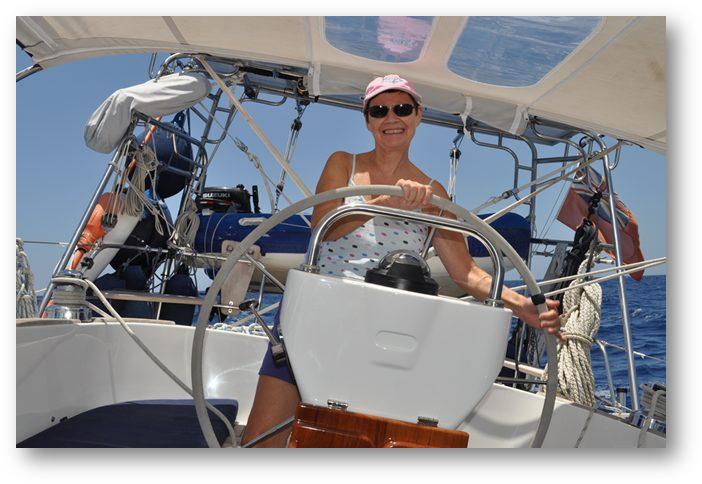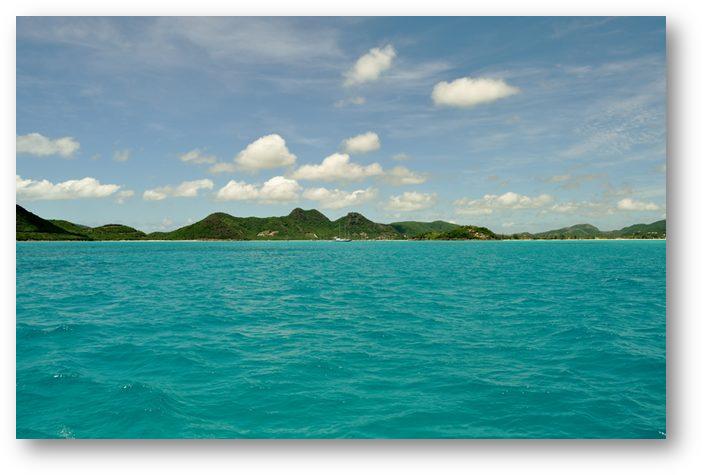Jolly Harbour - Antigua

Position: 17: 03.954N 61:53.063W Date: Wednesday 8th May 2013 We ended up spending two nights at anchor in Deshaies, but eventually made our way north to Antigua. The sail between the islands was perhaps the best sail we have had so far since arriving in the Caribbean. The sun shone and the wind blew at a steady 15-18 knots from the east, so we were sailing on a beam reach under full sail and averaging about 7.5 knots over the entire 7 hour crossing. Here’s Eileen keeping her running straight and true: As we approached the south western corner of Antigua the water shallowed considerably and turned a magnificent turquoise colour, something very similar to the waters we are used to in the Turks & Caicos Islands. There were numerous shallow patches and coral banks to negotiate our way around as we approached the entrance to Jolly Harbour. In fact the final run into the main harbour is very shallow, in some places with less than half a metre of water beneath our keel. It is normal to provide buoyage to help ships navigate into a harbour, particularly where the entrance is so shallow and twisting. In The Caribbean it is normal, for boats approaching harbour, to place red buoys to mark the right hand side of the entrance channel and green buoys to mark the left hand side. The entrance to Jolly Harbour was marked by red and green buoys, but they were scattered all over the place as though someone had been playing checkers with them. And most of the red buoys were on our left hand side and the greens on our right hand side. The channel was being dredged (the dredgers showed no day marks or other ‘mandatory’ signed characteristics) and they had simply moved the buoys to wherever was convenient for them, leaving no clue as to how to negotiate the entrance. Apparently you were expected to just know where the channel was. We made our way in very slowly, and with the occasional hand signals from resident boats pointing in which direction we should turn. We avoided grounding, but at times it was very close. I later spoke to the marina manager who seemed a bit too laid back about the situation with the buoyage. He told me that I simply keep south of the green buoys and ignore the red buoys, something completely contrary to the normal buoyage rules and without any written reference to guide first time arrivers. Oh well it is the Caribbean! After another interminable session writing the same information several times onto different forms, an process known as completing customs and immigration formalities, we were checked in and then approached the marina to enter our berth. The marina here uses the system of tying to wooden poles driven in to the sea bed, that we had last encountered in Florida some years ago. It seems to me that it is impossible to enter (or leave) a berth without the assistance of a marinero in a separate boat, but perhaps we will develop a technique as we become more familiar with the process. We were ably assisted by William the dock manager for Jolly Harbour. We have made arrangements for the boat to be lifted out of the water and stored ashore in Jolly harbour, on June 24th. Up until then we will spend time just drifting around the various anchorages and chilling out. |

